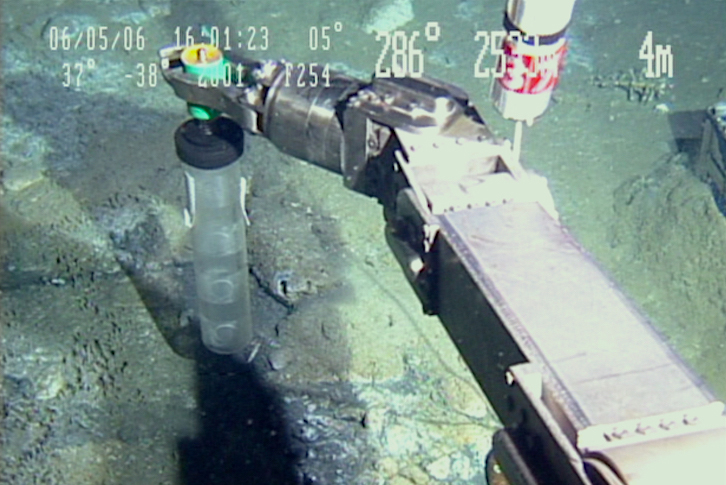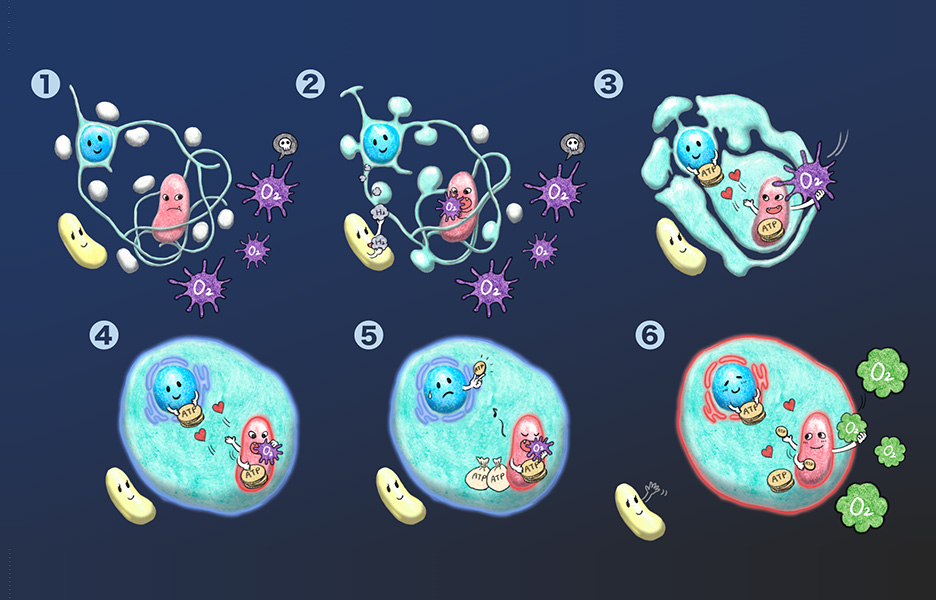Life Science and Biotechnology
Shedding Light on Our Origin – capturing us eukaryotes’ closest microbial relative reveals biology of our ancestor Archaea
Masaru K. NOBU
Bioproduction Research Institute
Update(MM/DD/YYYY):12/24/2020
Cultivation and analysis of microorganisms close to the ancestors of humans
For the first time in the world, the researcher and collaborating researchers have cultivated a microorganism (Archaea) from deep sea sediments (collected by the Shinkai 6500 in 2006) closely related to the ancestors of “eukaryotes”, a major branch of life that includes us and all organisms we can see with the naked eye.
 |
| Scanning electron micrographs of cultivated archaeon (MK-D1 strain) |
Our ancestors remain veiled in mystery
Where did we come from? How did we come to be? All organisms we can see with the naked eye share one feature – cells that have a “nucleus” that contains the genome and compartments (organelles) like the “mitochondrion” that allow each cell to breathe oxygen. About 2 billion years ago, “eukaryotes,” a branch of life that includes humans, fish, insects, plants and molds, were born from a single-celled organism that had such cellular structure. However, how these cells were born remains a mystery. Prior to the emergence of eukaryotes, life on Earth only consisted of “prokaryotes,” single-celled organisms with simple cell structures. It is thought that eukaryotes came to be through the symbiosis and fusion of two types of prokaryotes, “archaea” and “bacteria.” Bacteria are known to have become the mitochondrion that resides and breathe in each of our cells even today, but we know little of the identity of our archaeon ancestors, which had only been documented as fragmented genomic information.

Proposal of a powerful new theory regarding the origin of eukaryotes
Through synthesis of bioreactor cultivation, genomic analyses, and 12 years of research, the researchers succeeded in capturing and analyzing an archaeon closely related to our ancestors from deep sea mud for the first time in the world. Named strain MK-D1, the archaeon had an appearance and lifestyle entirely different to us. The cells were extremely small and simple – 550 nm (approximately 1/2000th of 1mm) in diameter with no complex internal structures, but interestingly extended elaborate tentacle-like protrusions from the cell surface. They could only live in the absence of oxygen and depended on symbiosis with other microorganisms. Based on these characteristics and genomic analyses, the researchers sought to identify the essence and origin of our ancestors. As a result, they have proposed the “Entangle-Engulf-Endogenize (E3)” model, a new hypothesis for the origin of us eukaryotes. This model posits that the gradual rise of oxygen on Earth 2.7 billion years ago triggered fusion, antagonism, and ultimate symbiosis of an “oxygen-hating” archaeon and an “oxygen-breathing” bacterium into a primitive eukaryote cell piloted by the former and fueled by the latter.

Illustrated by Ouchida Misaki
Towards further clarification of the evolutionary path to eukaryotes
We eukaryotes have achieved a level of advancement unseen in prokaryotes (multicellularization, longevity, etc.). At the core of this is complex cell structures and information processing capabilities. Despite the vastly different biology of our ancestor archaea, they must already have possessed the basis for these characteristics.
In the future, the researchers intend to conduct further detailed research on the genomics, physiology and ecology of strain MK-D1, working to clarify the origin and essential characteristics of our cell system and advancement. In addition, by investigating the history of life and clarifying the essential characteristics of prokaryotes, they will study how archaea and bacteria came to reach life’s first division of labor within a single cell.
Contact
Masaru K. NOBU
Researcher
Microbial and Genetic Resources Research Group, Bioproduction Research Institute
AIST Tsukuba Central 6, 1-1-1 Higashi, Tsukuba, Ibaraki 305-8566 Japan
E-mail: bpri-webmaster-ml*aist.go.jp (Please convert “*” to “@”)